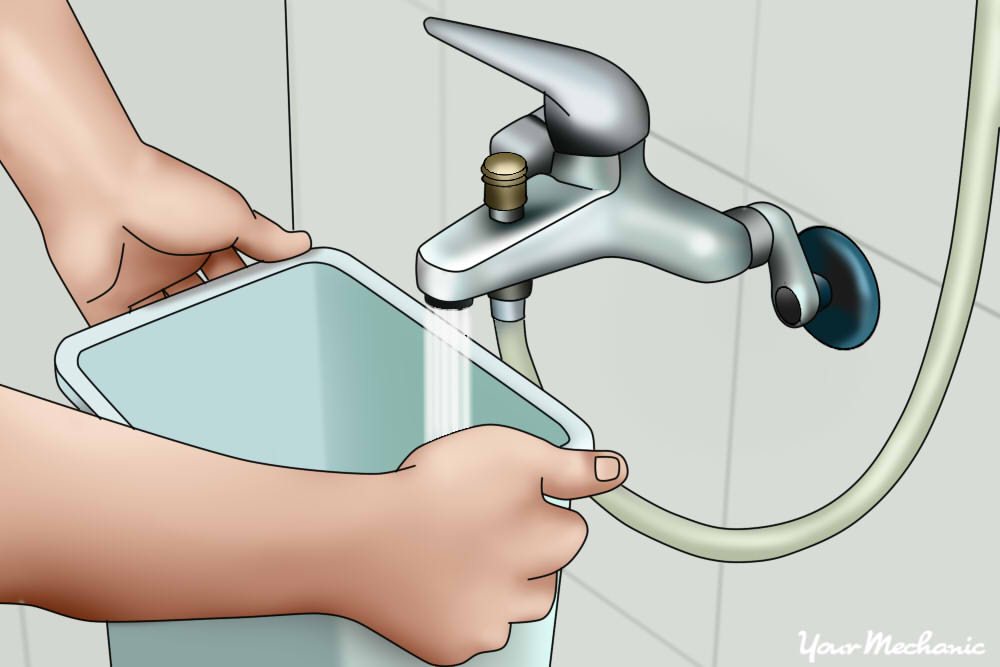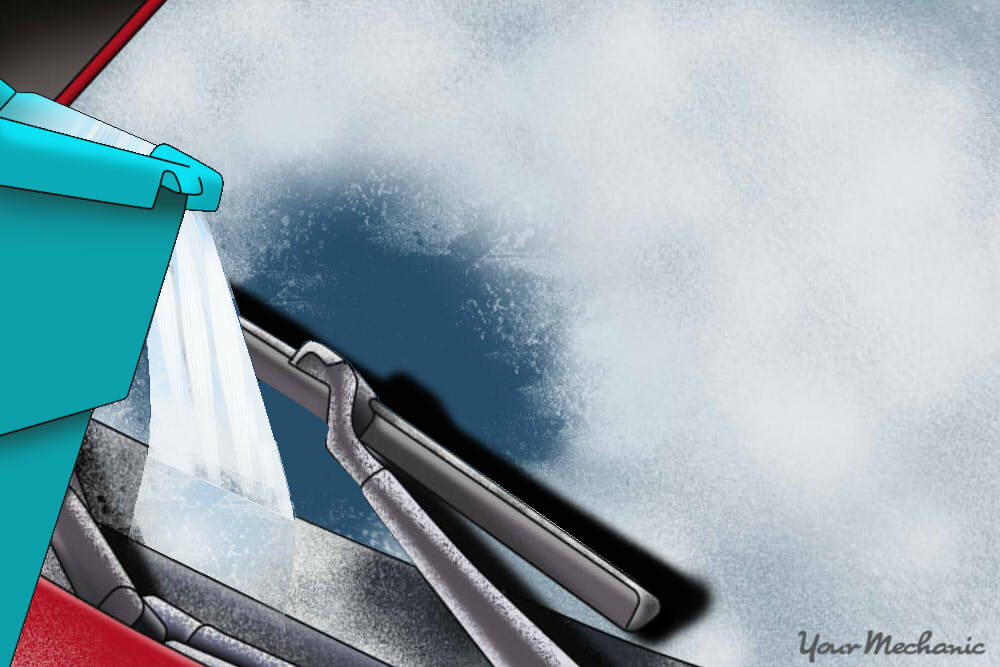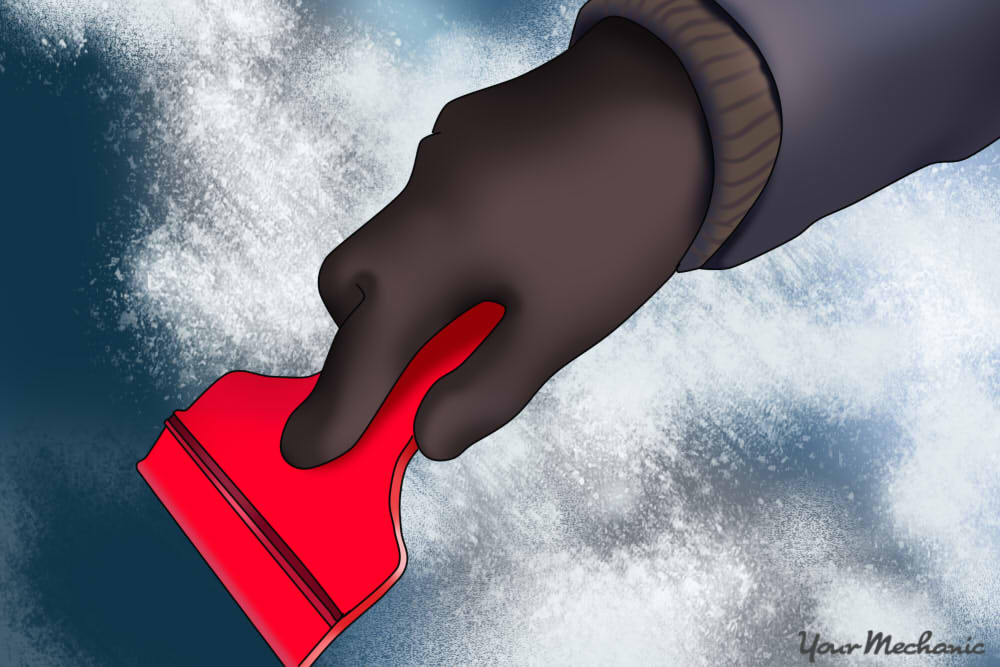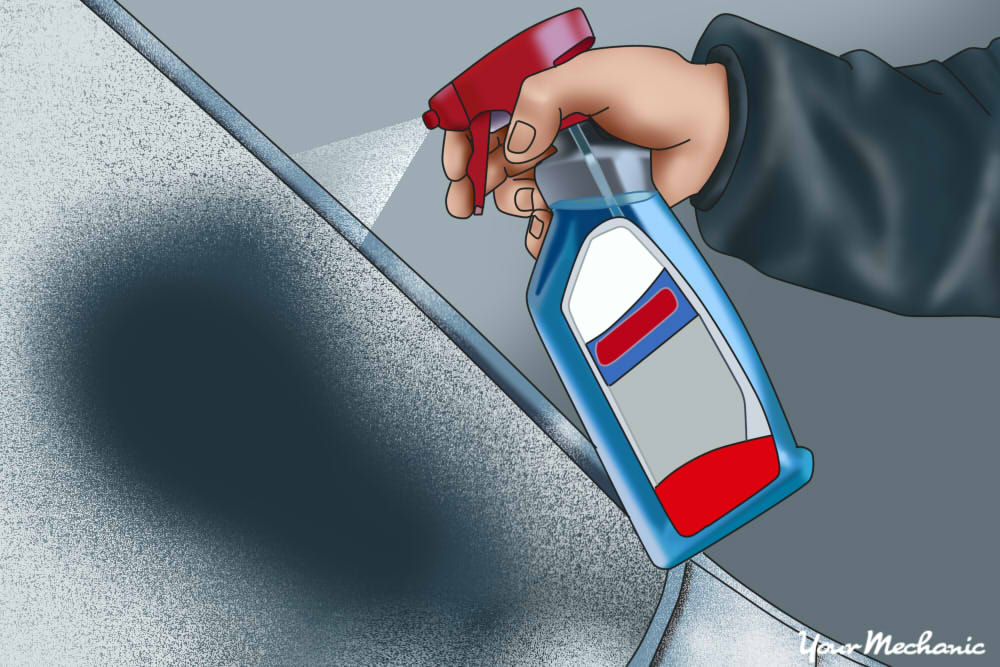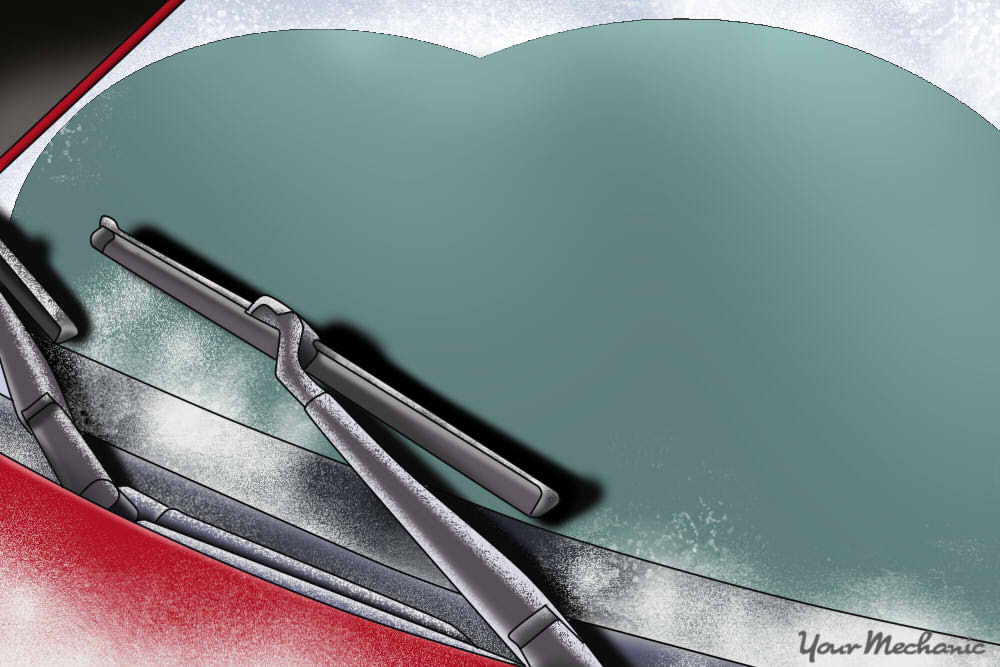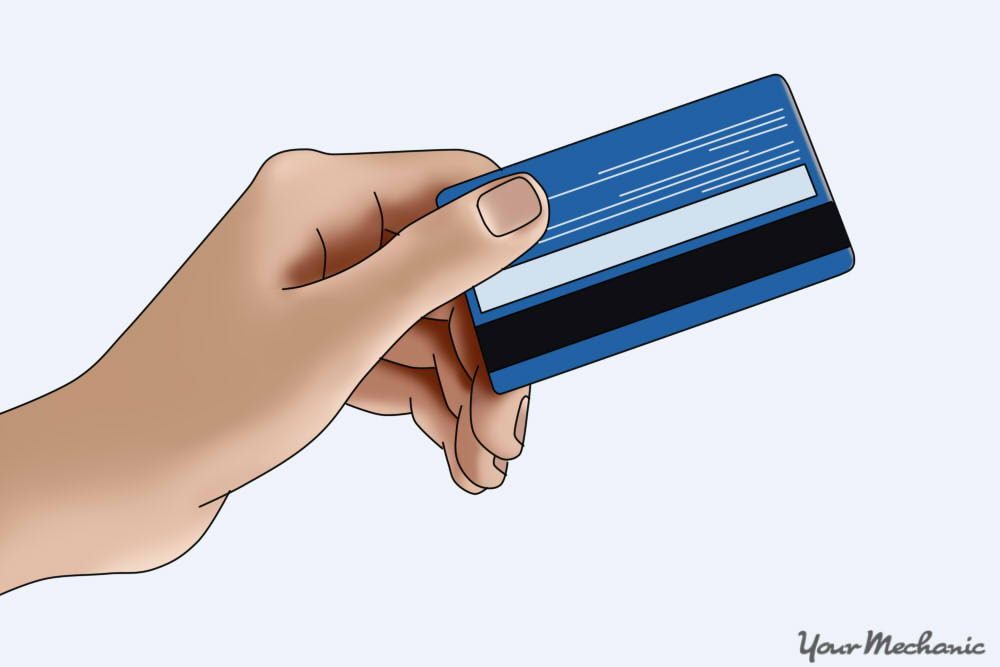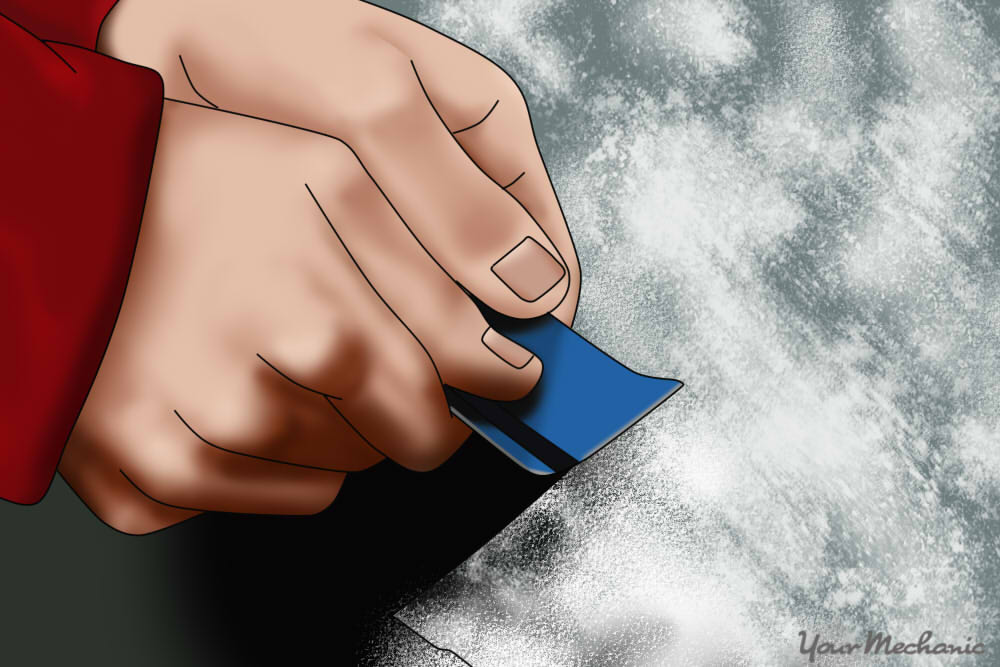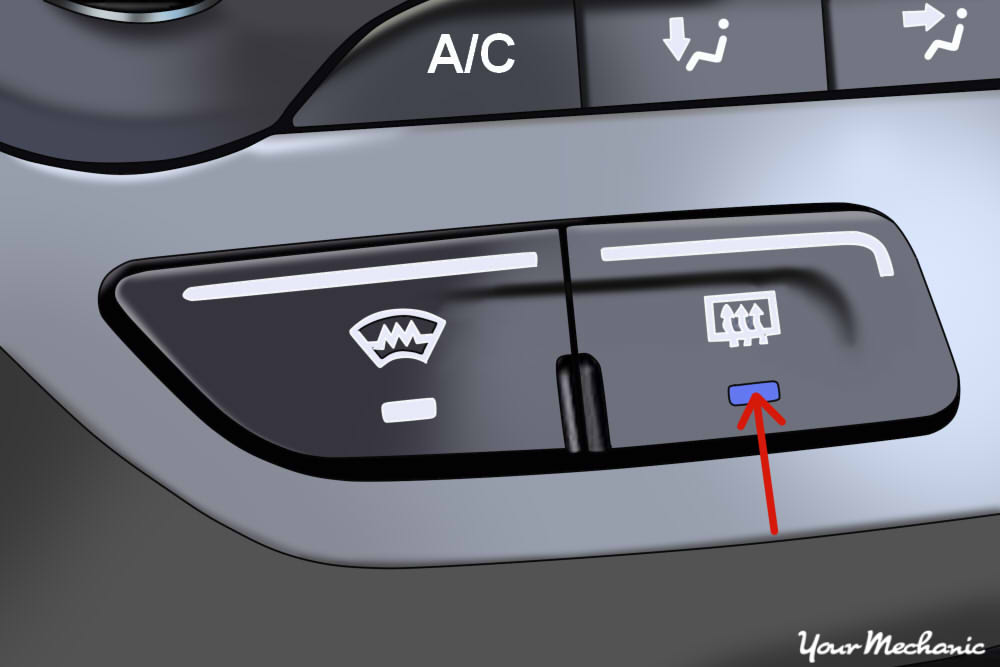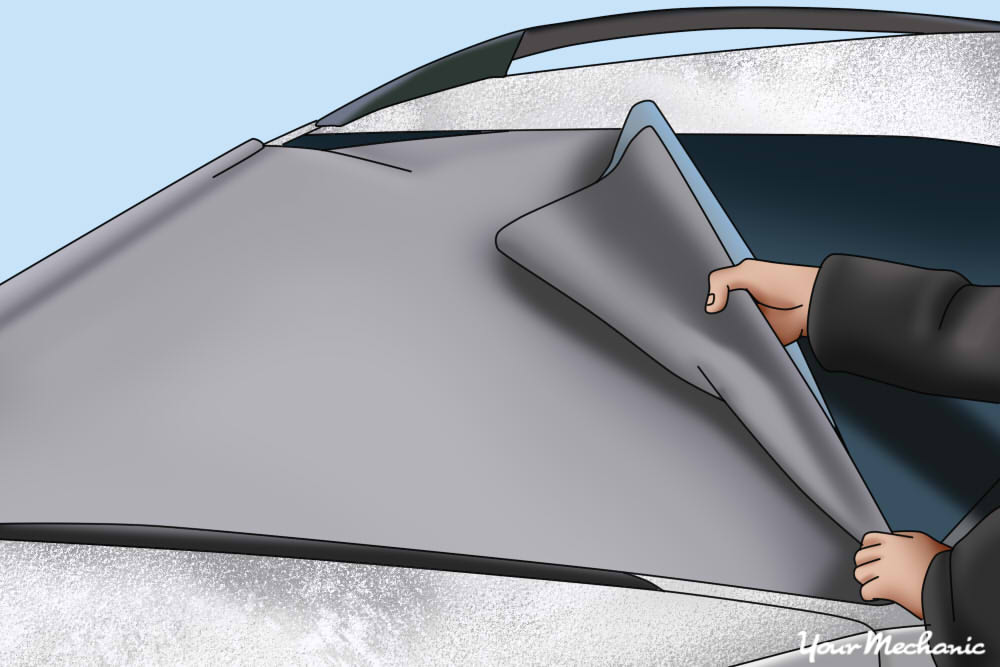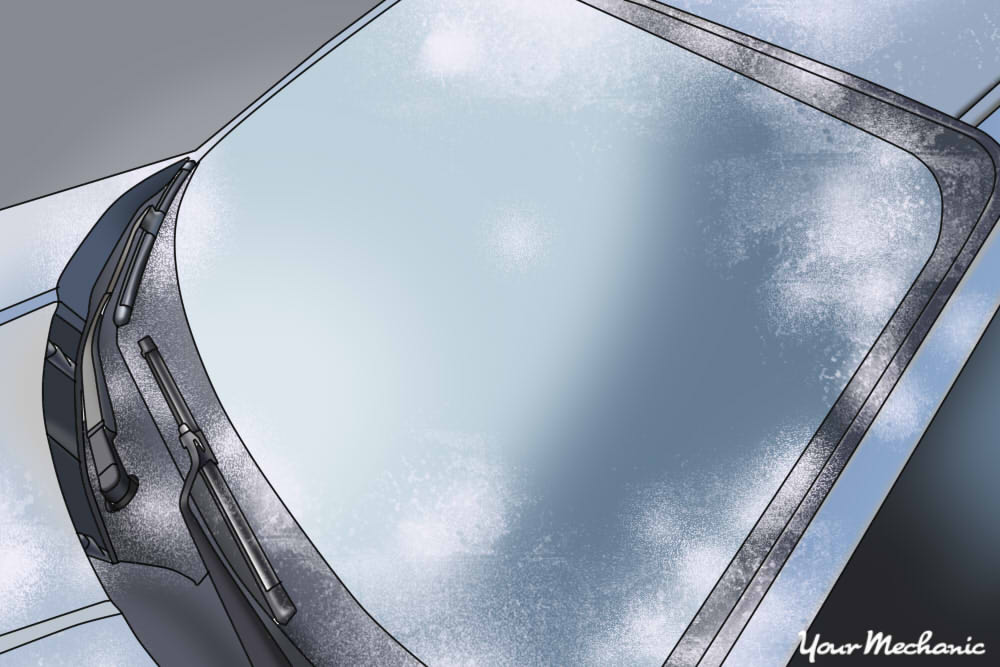

A telltale sign that winter has arrived is when your car windows are completely frosted over. Frost occurs on windows in the same way as dew does ﹘ when the temperature of the glass becomes lower than the surrounding air, condensation forms on the window. If the temperature is at or below freezing levels when this process occurs, frost forms instead of dew.
Frost can be a thin or thick layer, and it can be of dense or light consistency. Frosty windows aren’t pleasant to deal with and can be fixed if you have the spare time to deal with them properly.
Scraping your windows is time consuming, and in several southern states where frost seldom occurs, you may not have an ice scraper handy to deal with the frost. However, there are a few ways to remove frost in a quick and easy way so as to avoid damaging your vehicle.
Method 1 of 5: Melt the frost with warm water
Materials Needed
- Bucket
- Gloves
- Lukewarm water
- Windshield scraper
Step 1: Collect warm water in a bucket. Heat water until it’s lukewarm.
You can use either a kettle to warm up water or use warm tap water directly.
The amount of lukewarm water you need depends on how many windows you need to defrost.
Tip: The temperature of the water needs to be comfortably warm on your skin but not hot.
Warning: Using very hot or boiling water can cause your windows to crack or shatter. The extreme temperature difference between the cold glass and the hot water will cause rapid, uneven expansion that can crack your window.
Step 2: Pour warm water over your windows. Pour water over the whole surface that you need to clear.
You’ll notice that the white frost changes to a translucent, slushy mixture or it may even completely melt away.
Step 3: Remove the slush from your window. Use a gloved hand or a scraper to remove the slush from your window.
If there is still an icy coating on your window, it will be easy to remove with the scraper. If there are spots that you have missed, pour more water on them to remove them.
This method is excellent for temperatures at or just below the freezing point.
- Note: If the temperatures are much cooler than freezing point, say 15 F or below, there is a high probability that the warm water you pour on your car will turn to ice in other areas as it runs off your car’s surface. This has potential to leave your windows clear but frozen shut, your doors frozen closed, and areas like your trunk and your hood difficult or impossible to open.
Method 2 of 5: Use a de-icing fluid
De-icers are popular products to use in colder climates. They are often used for small problems like frozen door lock cylinders and frozen window frames, and are now increasingly being used to clear frosty windows.
De-icing fluid is made mainly of an alcohol such as ethylene glycol and isopropyl alcohol, though isopropyl alcohol is more common because it is less toxic. The de-icing fluid has a much lower freezing point than water, making it perfect for melting frost from windows.
You can purchase de-icing fluid at hardware stores or you can make your own by mixing three parts vinegar to one part water in a spray bottle. Alternatively, you can also mix a cup of rubbing alcohol with three drops of dish soap in a spray bottle to make a solution.
Step 1: Spray de-icer on the window. Spray a liberal coating of your de-icing fluid on the window that is frosted up.
Let it ‘soak’ or melt into the frost for about a minute.
Step 2: Remove the slush from the window. Use your wipers or a gloved hand to remove the melting frost from your window.
If there are bits remaining, either spray with your washer fluid and wipe off with your wiper blades or apply de-icer to those spots again.
In really cold weather such as 0 F or below, you may still need to use your scraper to remove some of the frost, though the de-icer spray will make it much easier and less time-consuming.
Method 3 of 5: Scrape off the frost
When your credit card or membership card expires, keep it in your wallet for emergencies or situations where you may not have a window scraper handy. You can use an old credit card as a window scraper, clearing your windows so you can drive safely. However, keep in mind that it will take a while to effectively clear the window with such a small contact surface.
Step 1: Use an old credit card. Select a card that you seldom use. Don’t use your most actively used cards because there is a very real chance that you may damage the credit card.
Step 2: Put the credit card against the glass. Hold your credit card lengthwise, keeping the short end against the glass.
Use your thumb to slightly bend the card lengthwise to provide extra rigidity. Hold the card at an angle of around 20 degrees where you can apply pressure without the card buckling.
Step 3: Scrape away the frost. Scrape forward with the card, digging into the frost on your windows.
Be careful that the card doesn’t flex too much or it could snap in the cold temperature. Continue scraping until you have a usable viewing area.
Method 4 of 5: Use the windshield defroster
When the temperatures outside are cold, your car’s engine takes several minutes before it produces heat. When there are no other choices but to wait for assistance in conjunction with the above methods, use the defroster in your car.
Step 1: Start your engine. Your vehicle will not produce sufficient heat to clear the windows unless the engine is running.
Step 2: Change the heater settings to defrost. Turn the heater settings to defrost.
This sets the mode door on the heater box to direct air out the vents by the windshield, blowing directly on the inside of the windshield.
Step 3: Turn on the rear defrost grid. It is the button that has similar vertical wavy lines in a square box.
This is an electrical grid that will heat up in the same fashion as a light bulb does. The heat generated from the electrical grid will melt through the frost on the rear window of your car.
Step 4: Scrape the windows. As an additional assistance to the windshield defroster, scrape the windows with a scraper or a credit card as indicated in the previous methods.
As the windshield warms up, the scraping will get much easier and will take much less time.
Method 5 of 5: Prevent frost formation on your windows
Step 1: Use a de-icer spray. Many de-icer sprays such as CamCo Ice Cutter Spray do more than just removing frost from your windows. Using the de-icer to prevent frost from forming on your window again. Just mist the de-icer over your windows when you park your car and frost will not form or adhere to the glass well, making it much easier to remove.
Step 2: Cover your windows. Covering your windows when you park will prevent the majority of frost from forming on your windows. Use a blanket, towel, sheet, or piece of cardboard to cover your windows when you park.
- Note: If the conditions are wet, this method is not advised as the material can very easily freeze to the glass, making it even more difficult to clear your windows instead of easier.
Another option is a windshield snow cover like this one from Apex Automotive that covers your window and is easy to remove, even in wet conditions.
Unfortunately, most people cannot avoid having to leave their vehicles parked outside at one time or another. If you are aware that the conditions outside ﹘ low temperatures, high humidity, approaching nightfall ﹘ are conducive to frost forming, you can employ a method to prevent frost from forming on your windows.


